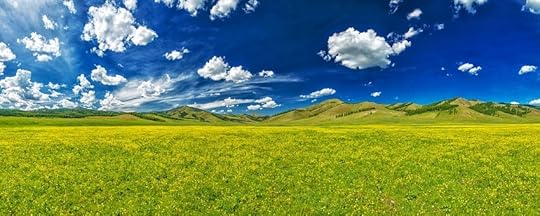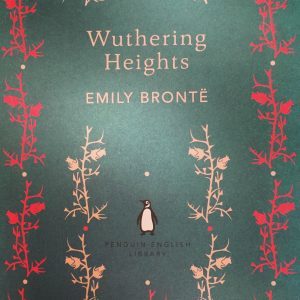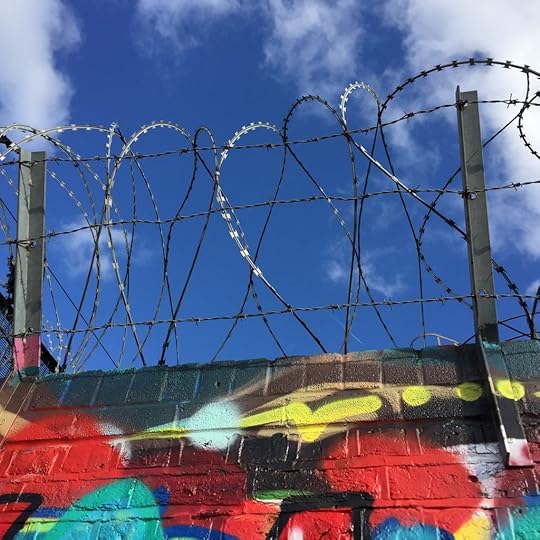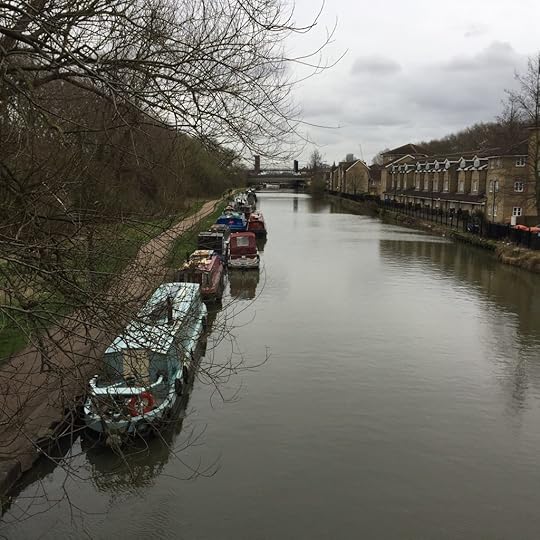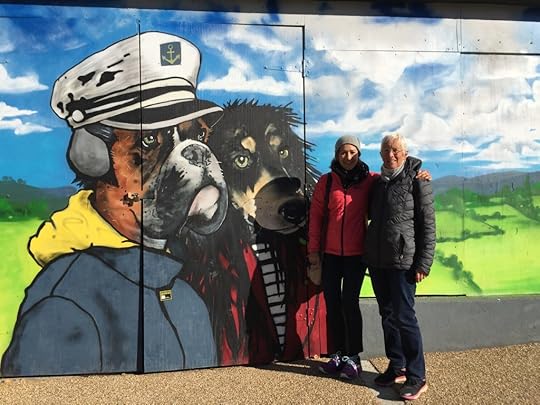Sanjida Kay's Blog, page 4
July 2, 2020
The best writing advice I ever received
Receiving criticism about your writing can be excruciating. It sometimes feels like a personal attack because fiction comes from the heart, from the soul. But learning to accept feedback graciously and even to welcome it is what will elevate your writing. Here’s my story on the Royal Literary Fund’s podcast:
Sanjida O’Connell
May 25, 2020
The Priest and the Lily – the inspiration for my novel about men and flowers
Many of our most common and beautiful garden plants have come from far-flung locations throughout the world, brought to us by intrepid explorers who have literally risked life and limb in their search for the rare and exotic. Our gladioli originally came from South Africa, rhododendrons from the Himalayas, the monkey puzzle tree is indigenous to Chile, the regal lily was discovered in China and many of our most exquisite orchids originate in the Amazon. The stories of some of these men – for they were mostly men – who travelled the world in search of flowers, and got themselves into scrapes – attacked by bandits, gored by a bull, capsized from a canoe, fell off a cliff – inspired my story, The Priest and the Lily.
Set in 1865, just after Charles Darwin published The Origin of Species, on his radical theory of evolution, The Priest and the Lily is about a Jesuit priest, Joseph Jacobs, who sets sail from Bristol for Outer Mongolia. Joseph, passionate, idealistic and driven, wants to discover rare plants and animals and make a name for himself in scientific circles back in Britain. The young priest is accompanied a Buddhist monk and a horseman; as they travel across the steppes, he hears stories of an astonishingly beautiful white lily. Finding this lily becomes his dream. But to discover where it grows, he will encounter many dangers, for he will have to face the savagery of the White Warlord, a Chinese General intent on seizing power in Mongolia, as well as the far more powerful Yolros lama, the living incarnation of the Buddha. And in his quest for the lily, Joseph will meet a woman who will show him something far more precious than a flower.
I spent years researching my story – and travelled to Outer Mongolia, where I had my own mini adventure. We were due to spend three weeks travelling by jeep and horseback in order to meet the tribe I was going to write about in my novel. Unfortunately, my luggage ended up in Russia, and I had to set off in just the clothes I was wearing! Thankfully I was wearing my walking boots!
Mongolia is stunning: it is a country of seemingly endless skies and steppes, with incredibly hospitable people. At the time of writing this blog, we’re in the grip of COVID-19, and everyone in the UK as well as many other countries, is currently in lockdown at home. I hope that my novel can, in some small way, help take our minds off this situation, transporting us to a country and a time far from own immediate experience, and perhaps, too, allow us appreciate what Joseph comes to realise – that it is love, which is more important than anything else on this earth.
Thank you to Victoria Goldman for hosting this blog on her website: Off-the-Shelf Books.
Men and Flowers: The inspiration for ‘The Priest and the Lily’
Many of our most common and beautiful garden plants have come from far-flung locations throughout the world, brought to us by intrepid explorers who have literally risked life and limb in their search for the rare and exotic. Our gladioli originally came from South Africa, rhododendrons from the Himalayas, the monkey puzzle tree is indigenous to Chile, the regal lily was discovered in China and many of our most exquisite orchids originate in the Amazon. The stories of some of these men – for they were mostly men – who travelled the world in search of flowers, and got themselves into scrapes – attacked by bandits, gored by a bull, capsized from a canoe, fell off a cliff – inspired my story, The Priest and the Lily.
Set in 1865, just after Charles Darwin published The Origin of Species, on his radical theory of evolution, The Priest and the Lily is about a Jesuit priest, Joseph Jacobs, who sets sail from Bristol for Outer Mongolia. Joseph, passionate, idealistic and driven, wants to discover rare plants and animals and make a name for himself in scientific circles back in Britain. The young priest is accompanied a Buddhist monk and a horseman; as they travel across the steppes, he hears stories of an astonishingly beautiful white lily. Finding this lily becomes his dream. But to discover where it grows, he will encounter many dangers, for he will have to face the savagery of the White Warlord, a Chinese General intent on seizing power in Mongolia, as well as the far more powerful Yolros lama, the living incarnation of the Buddha. And in his quest for the lily, Joseph will meet a woman who will show him something far more precious than a flower.
I spent years researching my story – and travelled to Outer Mongolia, where I had my own mini adventure. We were due to spend three weeks travelling by jeep and horseback in order to meet the tribe I was going to write about in my novel. Unfortunately, my luggage ended up in Russia, and I had to set off in just the clothes I was wearing! Thankfully I was wearing my walking boots!
Mongolia is stunning: it is a country of seemingly endless skies and steppes, with incredibly hospitable people. At the time of writing this blog, we’re in the grip of COVID-19, and everyone in the UK as well as many other countries, is currently in lockdown at home. I hope that my novel can, in some small way, help take our minds off this situation, transporting us to a country and a time far from own immediate experience, and perhaps, too, allow us appreciate what Joseph comes to realise – that it is love, which is more important than anything else on this earth.
Thank you to Victoria Goldman for hosting this blog on her website: Off-the-Shelf Books.
May 1, 2020
How to create the perfect villain!
Today I ran a lesson about villains for homeschool with my nine-year-old daughter. She loved it and created a supreme baddie: Galactica, Queen of the Galaxy, who is 962 years old, born when an asteroid crashed into the Milky Way. She’s composed of ‘stars, dust gas and magic in lady form’. Great fun, and a suitable topic for primary school English, but actually, it’s a pretty critical subject for any writer.
If you want to create a villain with your child for homeschool, we began by thinking of our five favourite villains, what movie or story they featured in, and writing why they make such great antagonists.
We then created our own villain, and you can too, by downloading my worksheet: My villain.
Adults, if you want further background information, or help with your own writing, please have a look at the video, the rest of this blog and check out my exercise and tips.
So why do you need a villain? Well, without a baddie, basically, your story lacks drama. There will be no uncertainty, excitement or tension. An antagonist can provide conflict, which will help create this drama. The antagonist will also elevate your protagonist, the central character in your story, by stretching him or her because they’ll need to grow, change, and summon deep inner resources to defeat the villain – as long as your baddie is a worthy opponent.
However, an antagonist need not be a person: if you’re writing a supernatural or horror story then your villain could be a creature or a ghost or a wizard. But in other genres, your villain could be a force, a concept, a trait or a psychological state. For instance, in 1984 the antagonist is ‘the Party’, the human (or inhuman) face of ‘Big Brother’. In spy thrillers, there is often a conspiracy or a government cover up; in LA Confidential, the hero is battling his own alcoholism; in Sense of an Ending, the opponent, seems to be Vanessa, but it’s actually the anti-hero, Tony’s, own character flaws; in Solar it’s global warming.
My two tips on creating a decent villain are first, have empathy. Get inside your baddie’s head. Almost no one thinks they’re doing the wrong thing or that they’re immoral – everyone can justify their actions.
And secondly, the villain isn’t always who you think it is. Check out my thrillers – in all three, Bone by Bone, The Stolen Child and My Mother’s Secret – the antagonist isn’t who you think it is.
For more on villains and for some writing exercises, please sign up to the Arvon Foundation’s newsletter and look for my writing tips on Antagonistic Antagonists, or download here: Arvon tip & exercise – Villain
Let me know what villains you created!
April 15, 2020
The Priest and the Lily – out now!
Really excited to share my new novel with you – The Priest and the Lily. It’s now available to buy from Amazon as an ebook. The paperback is coming soon.
Here’s what it’s about:
In 1865, Joseph, a young Jesuit priest and plant-hunter, sets out on a dangerous journey through Outer Mongolia, a land virtually unknown to the Western world. Charles Darwin’s radical theory of evolution has just been published, and Joseph is driven by his passion for science and his love of God. As he crosses the Mongolia Steppes with a Buddhist monk and a local horseman, he hears rumours of a rare and beautiful white lily. He believes that if he finds this flower, his fame and fortune will be assured.
But then Joseph meets Namuunaa, a shaman and the chief of her tribe.
And it is Namuunaa who will teach him the true meaning of his desire…
‘You will journey far beyond the boundaries of your imagination. You will meet and seize your heart’s desire.
It will be the death of your soul.’
An epic journey, a story of East meeting West, and of a love that transcends culture, faith and ultimately tragedy.
Let me know what you think!
March 26, 2020
One Year Later – Bethany
I recently saw a set of three mugs in one of my favourite shops. They read:
I’m the oldest child – I make the rules.
I’m the middle child – I’m the reason we have rules.
I’m the youngest child – the rules don’t apply to me.
I had great fun creating Bethany’s character. She’s the middle child in the Flowers family in my psychological thriller, One Year Later. She’s a TV presenter – which was also my former career (this is a picture of me at the start of my TV career as a wildlife presenter for the BBC).
One of the producers I worked with was talking about another presenter and said, ‘He’d stab his grandmother to get ahead.’ I had to put that quote in my novel!
Bethany is feisty, fiery, independent, driven and ambitious. She’s also a victim of TV culture where women have to look young and sexy no matter what show they’re presenting, whereas men are allowed to be on our screens at any age, looking, frankly, a bit dishevelled. Bethany is also a victim of the casual sexual discrimination and abuse against women that still exists in this industry.
He said, “Bethany, your problem is you’re smart without being intelligent, good looking without being pretty, and approachable in a girl-next-door-way, but no one in their right fucking mind would want to be your neighbour.”
Bethany talking to Nick about her TV producer in One Year Later.
March 22, 2020
Happy Mother’s Day!
Happy Mother’s Day! I had hoped to spend today being spoilt with prosecco and cake in some nice cafe – but I’m grateful that my family are healthy and safe at the moment, and spending time with them, no matter what, is the best Mother’s Day present.
All four of my psychological thrillers are about our relationship with our mothers in one way or another. They’re about the fierce love our mothers have for us but how sometimes love isn’t enough to protect us.
My Mother’s Secret – if Stella finds out what her mother is hiding, the family will be ripped apart.
The Stolen Child – can Zoe stop her adopted daughter from being taken by her biological parent?
One Year Later – Amy’s daughter drowned. Is a family member responsible?
Bone by Bone – when Laura tries to protect her daughter from a bully, she makes one small mistake – and now he’s after revenge.
I hope you all stay safe.
March 20, 2020
Life-changing literature
When I was a rebellious teenager, I thought the ‘classics’ would be boring…and then I read Wuthering Heights by Emily Bronte.
In these troubling and heart-breaking times, I think we could all draw comfort and solace from immersing ourselves in classical literature.
I talk to the Royal Literary Fund about life-changing literature.
I feared these books would be dull, staid and part of the establishment that I was so busy rebelling against; and then I read Wuthering Heights by Emily Bronte.
https://www.rlf.org.uk/showcase/sanjida-oconnell-lcl/
What have you read that’s changed your life?
When I was a rebellious teenager, I thought the ‘classics...
When I was a rebellious teenager, I thought the ‘classics’ would be boring…and then I read Wuthering Heights by Emily Bronte.
In these troubling and heart-breaking times, I think we could all draw comfort and solace from immersing ourselves in classical literature.
I talk to the Royal Literary Fund about life-changing literature.
I feared these books would be dull, staid and part of the establishment that I was so busy rebelling against; and then I read Wuthering Heights by Emily Bronte.
https://www.rlf.org.uk/showcase/sanjida-oconnell-lcl/
What have you read that’s changed your life?
March 13, 2020
Labyrinth – the setting
Setting is so important to me. It’s almost like another character, setting the tone and the mood as well, as obviously, the location. My last four psychological thrillers, Bone by Bone, The Stolen Child, My Mother’s Secret and One Year Later, are all, or partially set in Bristol, where I lived for many years.
The novel I’m currently writing, Labyrinth, is set in London. I wanted a bigger, better-known backdrop, grittier and more urban. But, what I’m obsessed with (as anyone who’s read anything I’ve written will know!) is nature. I’m interested in the interstices between the suburbs and ghettoised wildlife; how nature creeps in, even to the grimiest, grittiest streets, and how we carry a love and fear of the wild within us all.
So what better place to set Labyrinth than Hackney! It’s pretty darn urban, but encompasses Hackney Marsh, Walthamstow Nature Reserve, the Lee Valley, and pockets of reed beds in the recently completely Olympic Park. Parakeets fly through the ash trees bordering the River Lee and coots stride across the tow path.
Cue a number of research trips! The latest one was this week – I sneaked a quick walk along the Lee with my mum before I met up with my publishers.




